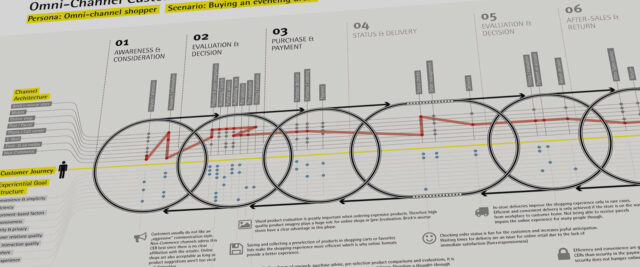Customer journey design in an omni-channel environment
Customer journey mapping
Master thesis
Service design
Overview
In my master’s thesis I tackled the issue of how to design coherent experiences across different channels in modern retail. I conducted in-depth interviews to create a conceptual framework that explains touch point choices in the customer journey. I then created a journey map to guide the deliberate design of experiences in an omni-channel environment.
My role
Graduate student
Tools & deliverables
Desk research
In-depth interviews
Requirements analysis
Customer journey maps
Background & challenges
When I started my master’s thesis at the Bauhaus University Weimar, I was looking for a topic that…
- …revolves around the topics of UX, UCD and Service Design.
- …is relevant for creating and improving products and services.
- …is challenging due to its complexity and multidisciplinarity.
At the time, I was working at Intershop, an e-commerce software vendor that builds tools to build and manage online shops. Together with the UX and user research teams, I discussed several interesting challenges in the field of e-commerce. We quickly narrowed it down to the intentional design of customer journeys in multi- or omni-channel retailing – an environment that was getting more and more complex.
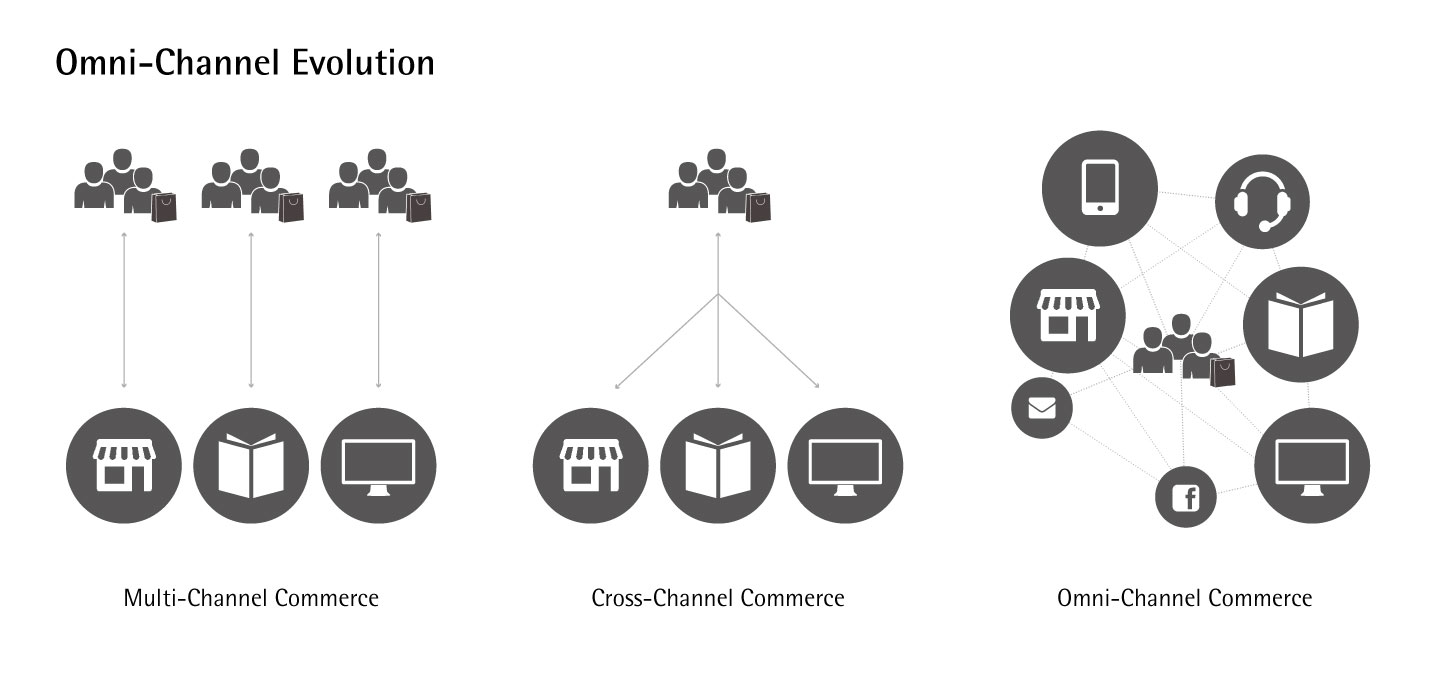
Omni-channel commerce describes the current state of retailing in which customers expect their touch points with retailers (like brick-and-mortar stores, online-shops, delivery services, phone hotlines, etc.) to not simply exist next to each other but to harmonize and complement each other. In this day and age, digital and physical channels should not work completely separate.
„It’s an era in which information blurs the boundaries, enabling multi-channel, crossplatform, trans-media, physico-digital user experiences.“
I was interested in the product-service-ecosystems that are formed by the countless interrelations of the different channels. Intershop’s clients were mostly small or medium-sized retailers that faced the challenge of ‘always on’ customers (and their declining acceptance of a fragmented and unconnected shopping landscape). Therefore, understanding the rapidly changing customer behaviours and their needs regarding complex channel architectures was important for Intershop – they offer the backbone of many retailers’ infrastructure. Being a not well-researched field the topic also had scientific relevance.
My research question
How can customer journeys be deliberately designed across all the different platforms and technologies in omni-channel retailing and what is necessary to ensure a coherent customer experience across the different customer touch points?
I narrowed it down to fashion retailing and focussed on customer journeys within the ecosystems of a single retailer (as opposed to journeys across different service providers) to make the subject manageable.
The process
It was my master’s thesis, so I had to build a solid theoretical foundation. Facing a very complex topic, I built an interdisciplinary theoretical framework that is based on a lot of different domains like computer science, social sciences, business studies and the more practical fields like UX and UCD.
I made a deep dive into the topics of omni-channel retail, service design, service science, management, and engineering (SSME) (that’s how economists and social scientists call service design), customer experience management, and requirements engineering in order to define key terms and their relation to each other (e.g. what are channels, touchpoints, or user requirements and what is their role in the omni-channel customer journey?). In that process, I found Pine’s and Gilmore’s Experience Economy and Stickdorn’s and Schneider’s practical book on Service Design very helpful.
After building the theoretical foundation, I designed a qualitative and explorative study. The goal was to collect empirical data that can support the modeling of a conceptual framework. (as well as answering my research questions). I conducted eight face-to-face interviews and analyzed the collected materials (following Mayring’s approach of qualitative content analysis and Kelle’s & Kluge’s approach of empirical typification).
Results & deliverables
Having analyzed the collected data, I combined the insights with the theoretical groundwork and derived a conceptual model of touch point experiences in the omni-channel customer journey.
A theoretical model of touch point experiences
The model is based on the touch point grid, consisting of channels and the different steps in the buying process. Touch points are the intersections of a step and a channel (e.g. the online store in the step of product comparison).
When the customer enters the journey, he or she brings in certain expectations and goals regarding the interactions with the retailer. These customer experience requirements (CERs) are influenced by individual (different personas) and contextual factors (different scenarios).
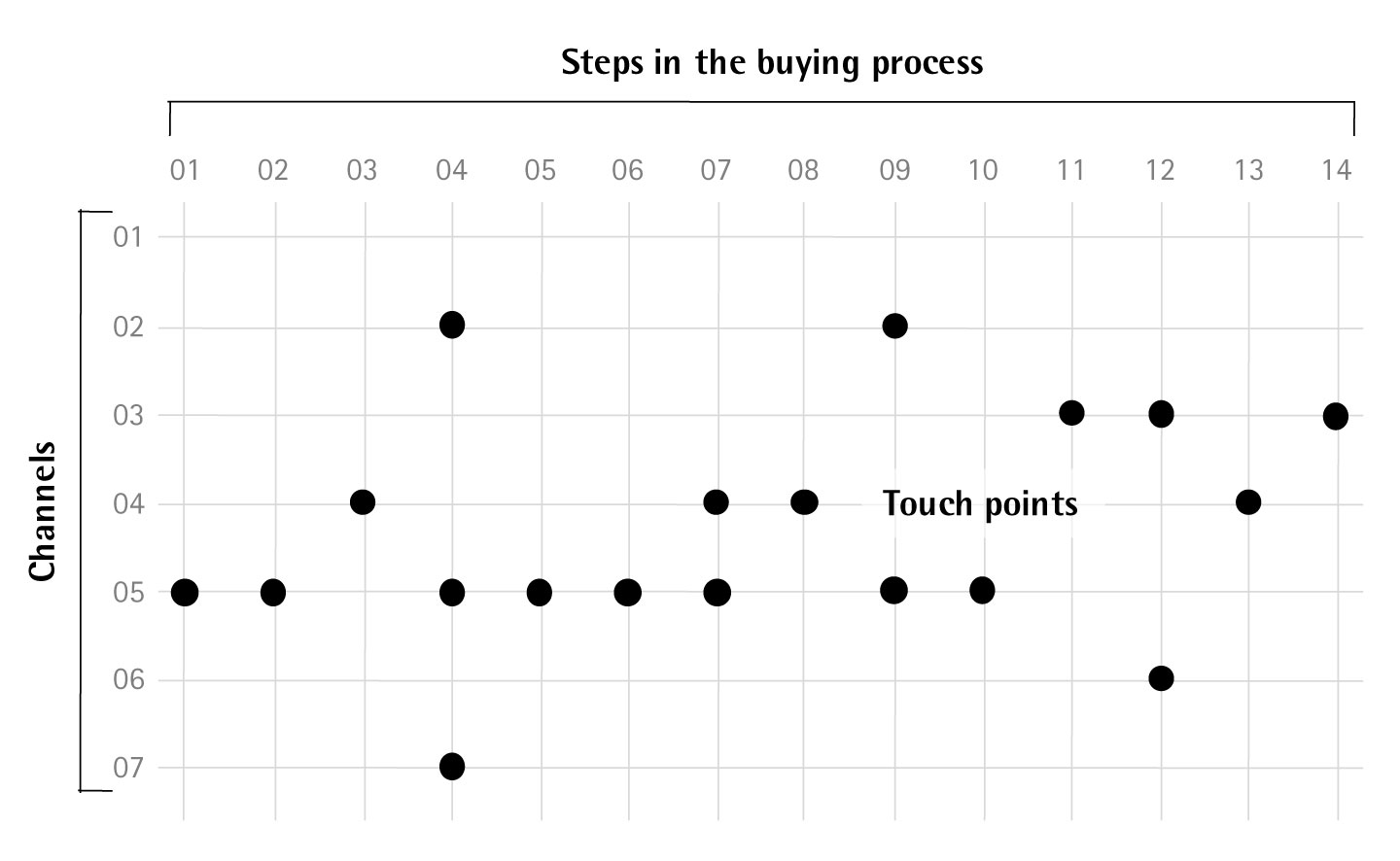
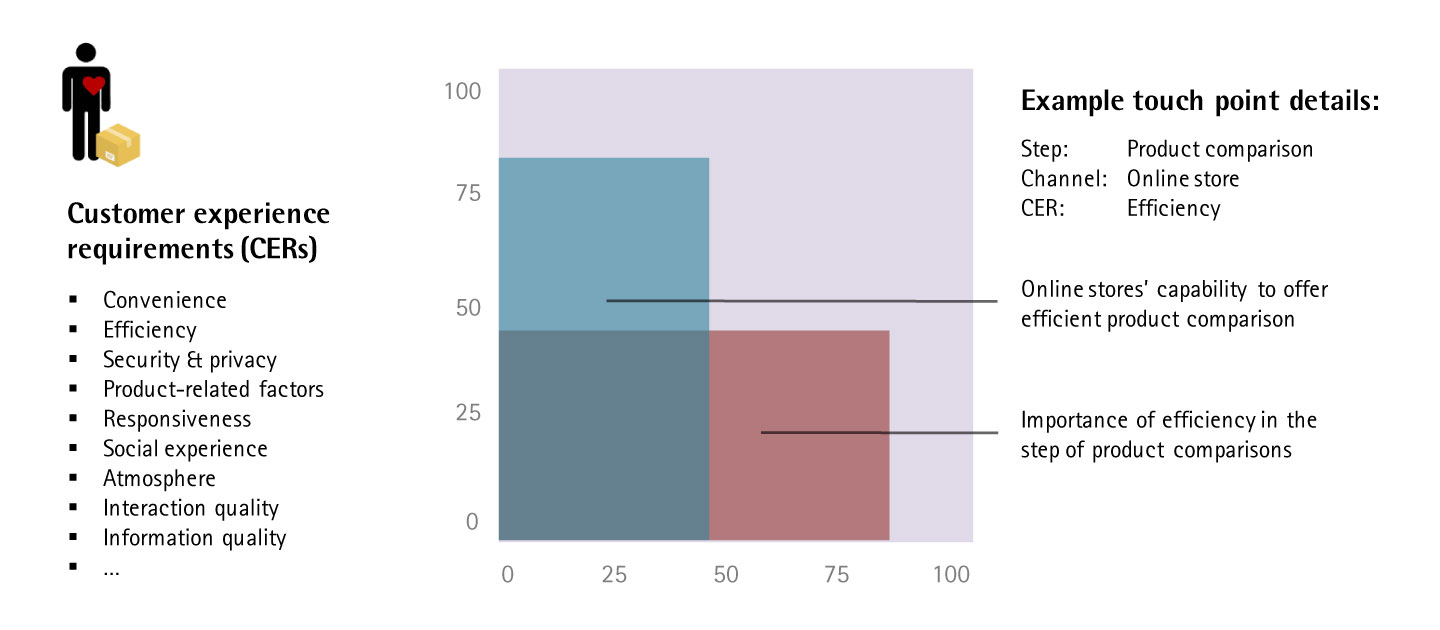
What’s interesting now is to have a look at how well specific touch points fit the users’ requirements. For this purpose, the model introduces the concepts of channel capabilities (since some channels serve specific requirements better than others) and step-specific requirements (since people have different requirements across the steps of their journey).
The actual touch point experience (as well as touch point choice) is determined by two things:
- How important is the CER in the specific step of a touch point (e.g. how important is efficiency in the step of product comparison)?
- How well can the specific channel of a touch point serve the CER (e.g. how efficient is the product comparison in an online store)?
Depending on the answers to those two questions, the customer’s experience with a touch point will be good or bad. The aggregated touch point experiences form the customer experience.

Creating a customer journey map to guide touch point design
However, customer experiences themselves cannot be designed but only the tangible things and processes that customers are facing. I still had to answer my initial research question of how to create a customer journey with a coherent experience. I had to go a step further and create a tool that guides the design of all the adjustable elements according to the CERs. For this, I created an exemplary customer journey map that addresses the aforementioned concepts.
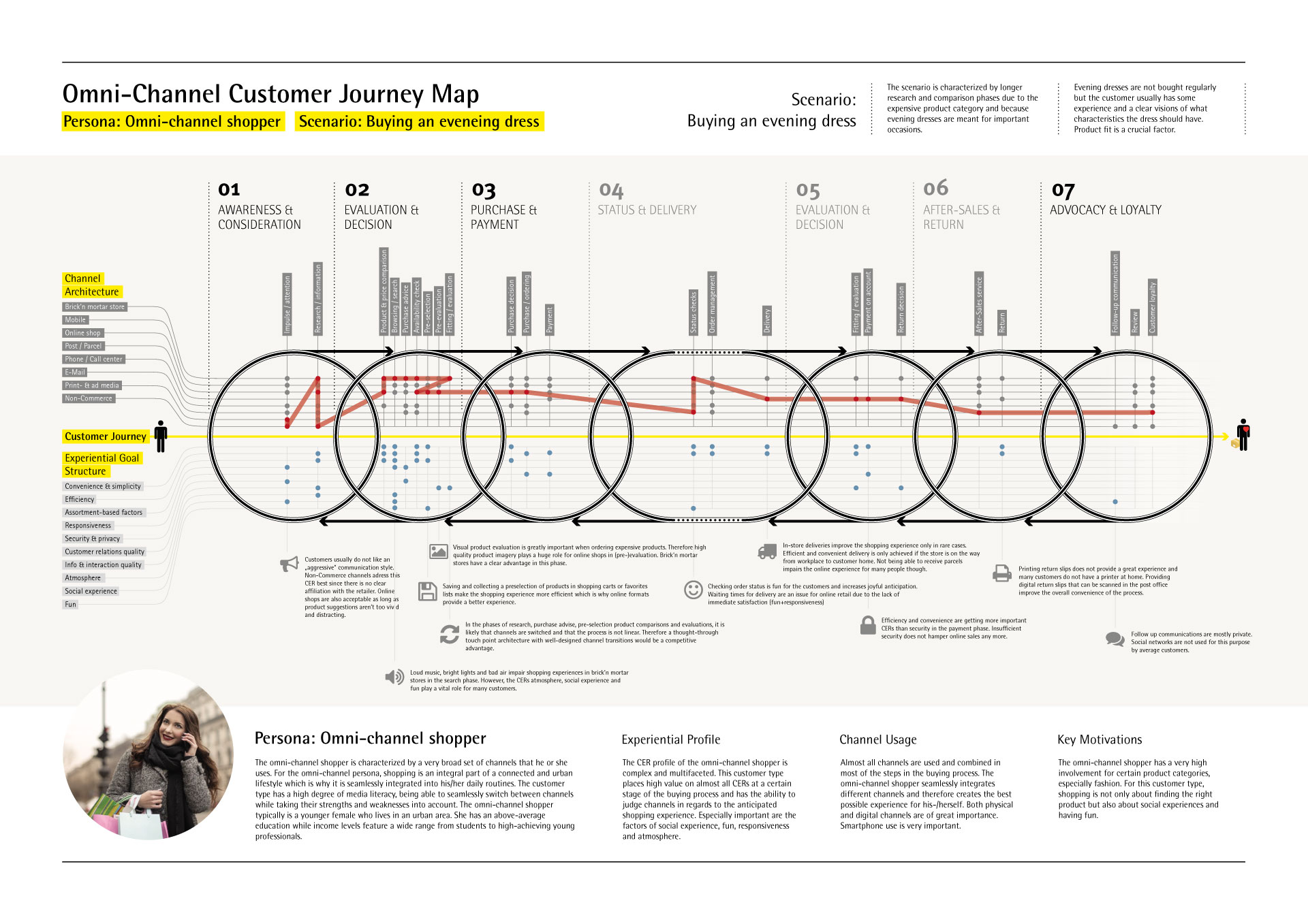
The map illustrates the touch point architecture (grey dots on the upper lines) as well as the customer experience requirements and where in the journey they become relevant (blue dots on the lower lines). The red line shows an example of a specific user journey across touch points. Below the lines, qualitative data describes the fit or possible discrepancies between the channels’ capabilities and the user requirements for each step. It also provides context by giving details on the involved persona and the scenario.
Takeaways
What I learned in the process is in line with what I experienced in my practical work in UX. Deliberately influencing the overall customer experience of a service is very hard due to its complexity and the increased amount of resources you need for the research (compared to the more product-focused approaches like usability testing).
To achieve a saturated picture, you need to work with bigger sample sizes and embrace the complexity that lies behind the journeys across technologies and the human needs that determine them. Increasing the sample size would have improved my thesis as well but given the fact that I had to work scientifically, I lacked the time for the thorough analysis of the material.
I wrote master’s thesis I 2014 and tried to convince my clients of the importance of a coherent customer journey ever since – but it’s an up-hill battle given the issues mentioned above. To this day many of the services and products I use and evaluate feel fragmented and out of context, making it clear that doing user research on the big picture still is not common practice.
